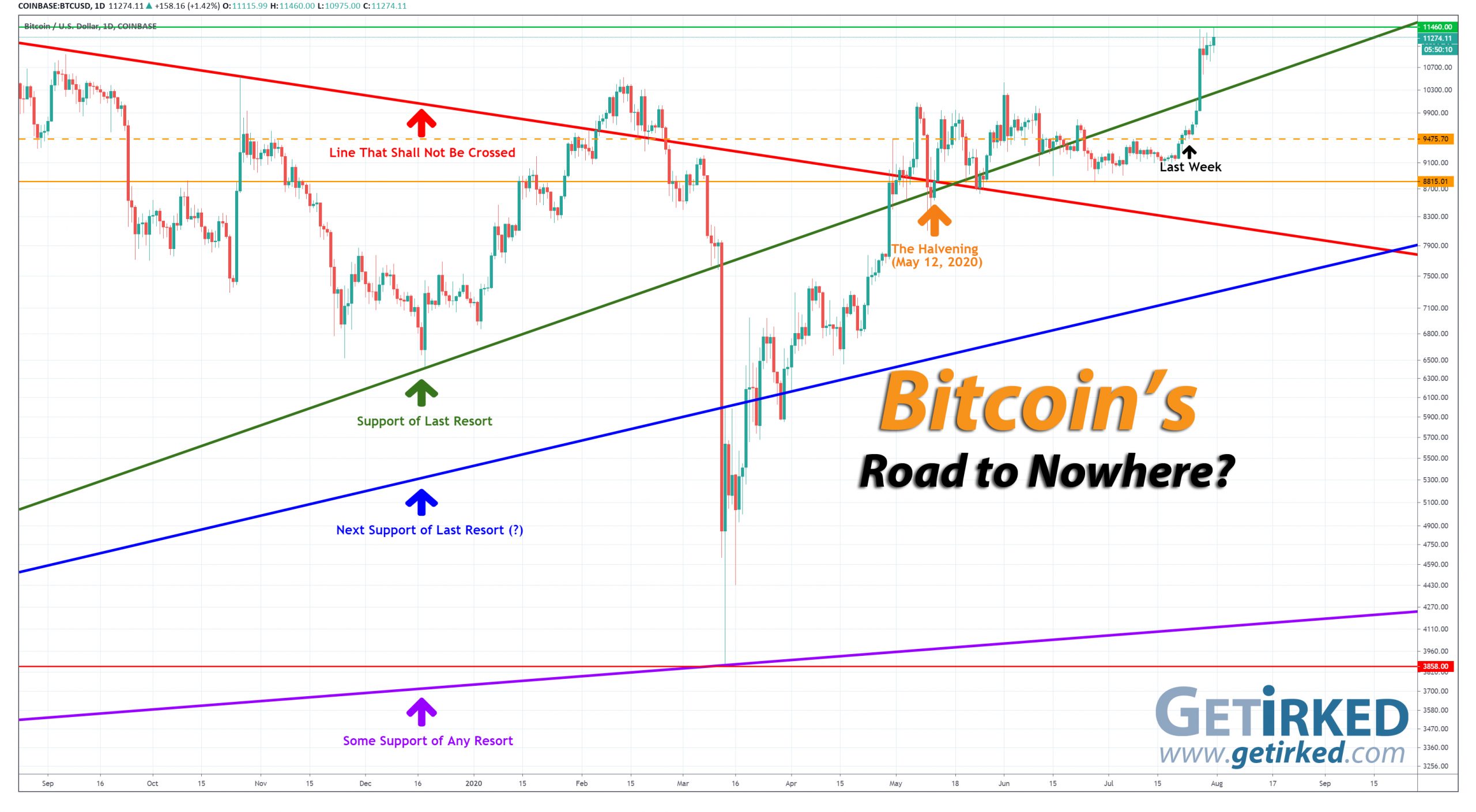Summing Up The Week
Despite amazing earnings reported by four of the biggest stocks in the NASDAQ, the markets felt like they might be rolling over this week as reported GDP numbers brought home the reality of what the novel coronavirus COVID-19 has been doing to the economy.
Let’s look at the news that moved the markets this week…
Market News
Pending Home Sales Up Two Months in a Row
Pending home sales rose 16.6% since May and 6.3% since June 2019 according to the National Association of Realtors (NAR), reported CNBC on Wednesday. In addition, the NAR raised its forecast for 2020, now expecting existing-home sales to decline by only 3% with new home sales rising by 3%.
“It is quite surprising and remarkable that, in the midst of a global pandemic, contract activity for home purchases is higher compared to one year ago,” said Lawrence Yun, Chief Economist for NAR. “Consumers are taking advantage of record-low mortgage rates resulting from the Federal Reserve’s maximum liquidity monetary policy.”
Historically, home sales are an indicator of a strong economy as they represent the biggest purchase most American consumers make in their lives. That being said, if there’s anything we’ve learned during the pandemic, it’s that what’s happened historically is no longer a good indicator of what will happen now.
Q2 GDP Sees Worst-Ever -32.9% Loss
The U.S. economy suffered its worst lost ever in a second quarter with the Gross Domestic Product (GDP) falling 32.9%, reported CNBC on Thursday.
The report “just highlights how deep and dark the hole is that the economy cratered into in Q2,” said Mark Zandi, chief economist at Moody’s Analytics. “It’s a very deep and dark hole and we’re coming out of it, but it’s going to take a long time to get out.”
Despite economists expecting a worse decline of 34.7% and the fact investors knew the report was coming, the market still sold off substantially on Thursday.
Jobless Claims Rise Second Week in a Row – 1.434M
On Thursday, The Labor Department reported that 1.434 million new jobless claims were filed last week, reported CNBC. Economists expected claims to rise by 1.45 million.
The report marks the 19th straight week with new claims 1 million or more and the second week when claims rose after declining for 15 weeks. The rise in new claims is certainly discouraging as it indicates the economy is weakening, not rebounding, as companies lay off employees amidst pauses and retreats in the opening of state economies across the country.
Four Biggest Stocks Report on the Same Night?!
As a result of scheduling snafus and testimony in front of Congress, somehow, four of the biggest companies in the S&P 500 – Alphabet (GOOG), Amazon (AMZN), Apple (AAPL), and Facebook (FB) all reported earnings on the same night – Thursday.
Each of the four of these stocks could be market-movers on their own, however, when together, let’s just say many analysts were warning investors to approach the end of the week with extreme caution given the potential for at least one of the four to report disappointing quarterly results.
Turns out the fear was all for naught as all four companies reported blowout earnings. Apple even went as far as to announce a 4-for-1 stock split.
What is a “stock split?”
When a company’s stock becomes what it feels is too high a cost per share (or if a company is failing, but that’s a different story), it can opt to do a stock split. In the case of Apple, this is the company’s second stock split in the 2000s. This 4:1 (or “4-for-1”) split means holders of the stock will receive four shares for every one they own at the time of the split. However, the stock’s price also divides by 4. With Apple currently trading around $412, that means it will trade at $103 after the split. It’s important to remember that a stock split adds no value to the stock, however, many retail investors often buy a stock after a split as it has become more “affordable” on a per-share price basis. This buying can, naturally, result in the stock raising in price, so, generally, stock splits on the way up are looked at positively.
Next Week’s Gameplan
Major analysts and hedge funds are predicting a wild August with many expecting to see a selloff in the markets anywhere from 10-20%.
Personally, I’d like to see a selloff so I can add to some of my positions, however, in my many years in the markets, I’ve found that the market rarely does what the majority of people expect it to do.
We’ll have to wait and see what happens next week!
This Week in Play
Stay tuned for this week’s episodes of my two portfolios Investments in Play and Speculation in Play coming online later this weekend!
Crytpo Corner
Important Disclaimer
Get Irked contributors are not professional advisers. Discussions of positions should not be taken as recommendations to buy or sell. All investments carry risk and all readers must accept their own risks. Get Irked recommends anyone interested in investing or trading any asset class consult with a professional investment adviser to determine if an investment idea is suitable to them and their investment goals.
Click chart for enlarged version
Bitcoin Price (in USD)
%
Weekly Change
Bitcoin Price Action
The pullback to $9475.70 made a week ago turned out to be the new weekly low as Bitcoin broke its price consolidation extremely bullish, hitting a new weekly high at $11,460.00 just today (Friday, July 31, 2020), cracking through several of the barriers bears claimed would hold it back.
The Bullish Case
Bulls see the price movement as a bullish indicator of a new bull market, and it’s certainly hard to argue with that as all the price action we’ve been watching shows lots of volume and interest in buying. Analysts are predicting a potential break of the highs of 2019 around $14,000 by October with some expecting Bitcoin at $20k by the end of the year.
The Bearish Case
Bears concede that this long period of price consolidation might indicate a bull market, but they will also argue that Bitcoin tends to pull back 20-30% even during bull rallies, cautioning interested speculators to wait for a pullback before putting on a new position or adding to an existing one.
Bitcoin Gameplan
Current Allocation: 0.772% (down from 1.515% last week)
Current Per-Coin Price: $8,171.89 (reduced -12.91% from last week)
Current Status: +37.962%
As I planned last week, I took profits when Bitcoin broke bullish this week. Throughout the week, I waited for the crypto to consolidate and used stop losses to shed some of my position in order to lock in gains.
Currently, I plan to close the position entirely if Bitcoin breaks its current 4-Hour Low of $10,975.00 locking in profits of around 15-17% on the entire position.
However, I also plan to open a new position if we see Bitcoin pull back to $10,200 and, hopefully, lower.
Bitcoin Buying Targets
Using Moving Averages and supporting trend-lines as guides, here’s my plan of buying quantities and prices:
0.889% @ $10,209
0.889% @ $9987
0.889% @ $9662
0.889% @ $9225
0.889% @ $9076
1.333% @ $8618
1.778% @ $8307
2.222% @ $7938
2.667% @ $7438
3.111% @ $6976
Bitcoin Selling Targets
As mentioned above, the sell target is a stop-loss limit order that will trigger around $10,975. The stop loss will close my current trade entirely, keeping the profits in crypto and giving me the opportunity to rinse and repeat the technique if Bitcoin pulls back far enough.
Why the differing quantities at each level instead of a flat percentage?
Rather than buying an equal percentage, I change my buying quantity at each stage as a reflection of how likely Bitcoin could bottom and rebound from that stage. Rather than increasing my quantity on the way down, I’m used a fixed amount of money, so I’m basing how much I buy by how likely I think Bitcoin will drop to a certain level. In this case, I don’t think it’s likely Bitcoin will be able to break its $3128 low, so my quantities under that price point are less to account for the chances it will get to them.
No price target is unrealistic in the cryptocurrency space – Bullish or Bearish.
While traditional stock market investors and traders may think the price targets in the cryptocurrency space are outlandish due to the incredible spread (sometimes a drop of near -90% or a gain of up to +1000% or more), Bitcoin has demonstrated that, more than any speculative asset, its price is capable of doing anything.
Here are just a few recent price movements over the past couple of years:
- Bitcoin rose +2,707% from its January 2017 low of $734.64 to make an all-time high of $19,891.99 in December of the same year.
- Then, Bitcoin crashed nearly -85% from its high to a December 2018 low of $3128.89.
- In the first half of 2019, Bitcoin rebounded +343% from $3128.89 to $13,868.44.
- From June 2019, Bitcoin dropped -53.64% to a low of $6430.00 in December 2019.
- From December 2019’s low, Bitcoin rebounded +64% from $6430.00 to $10,522.51.
- In March 2020, Bitcoin dropped -63.33% to a low of $3858.00, mostly in 24 hours.
- From March 2020, Bitcoin rebounded +197.05% to $11,460.00 in July.
- Where will Bitcoin go from here? Truly, anything is possible…
What if Bitcoin’s headed to zero?
The only reason I speculate in the cryptocurrency space is I truly believe Bitcoin isn’t headed to zero.
I am prepared for that possibility, however, by knowing I could potentially lose all of the capital I’ve allocated to this speculative investment. Professional advisers recommend speculating with no more than 5% of an investor’s overall assets. Personally, I’ve allocated less than 2% of my assets to speculating in crypto.
I feel that anyone who doesn’t believe in the long-term viability of cryptocurrency would be better served not speculating in the space.
On a good day, this asset class isn’t suitable for those with weak stomachs. On volatile days, the sector can induce nausea in the most iron-willed speculator.
DISCLAIMER: Anyone considering speculating in the crypto sector should only do so with funds they are prepared to lose completely. All interested individuals should consult a professional financial adviser to see if speculation is right for them. No Get Irked contributor is a financial professional of any kind.
Get Irked in your Email?
We’re making a list and checking it twice! If there’s enough interest, we’ll start sending the Week in Review straight to your inbox!
Interested? Click here to sign up!
Ways to give back to GetIrked:
Send me a tip via Stripe! Thank you!
Get free money by signing up for an account with my referral link for Schwab
Sign up for Gemini and we each get $10
Click this referral link to get the Brave Browser
If you use Brave, you can also use the Tip function to tip me in Basic Attention Token (BAT).
Suicide Hotline – You Are Not Alone
Studies show that economic recessions cause an increase in suicide, especially when combined with thoughts of loneliness and anxiety.
If you or someone you know are having thoughts of suicide or self-harm, please contact the National Suicide Prevention Lifeline by visiting www.suicidepreventionlifeline.org or calling 1-800-273-TALK.
The hotline is open 24 hours a day, 7 days a week.


